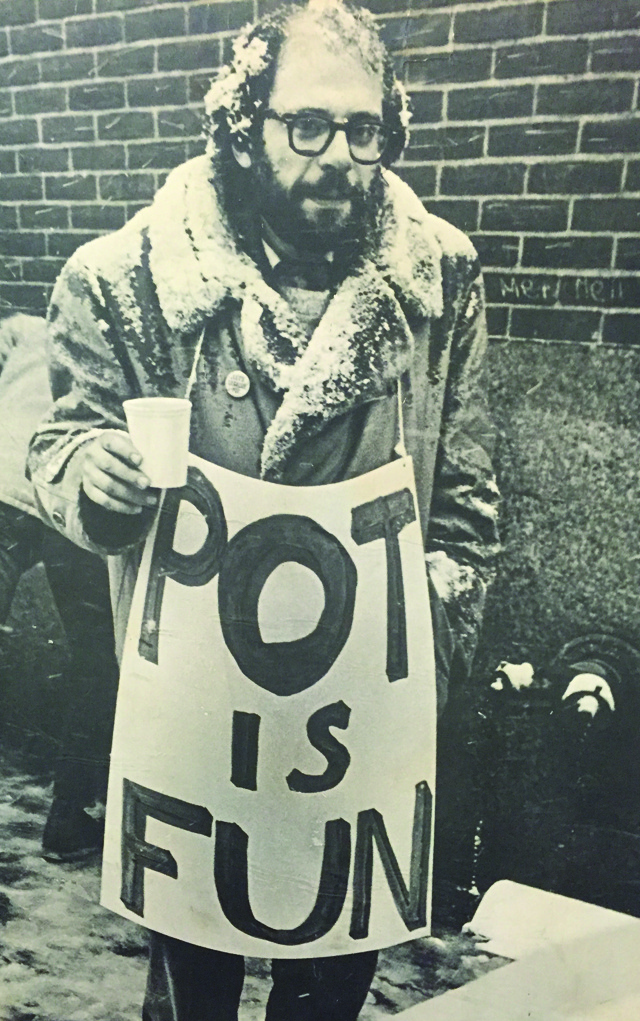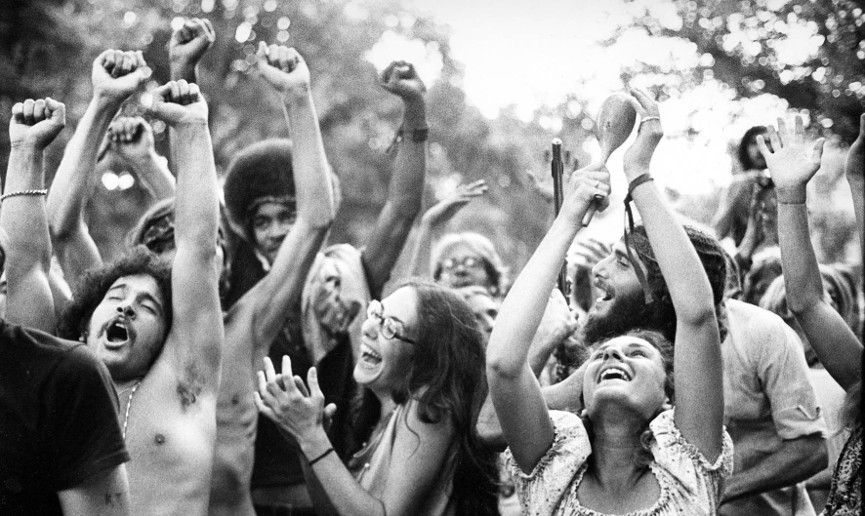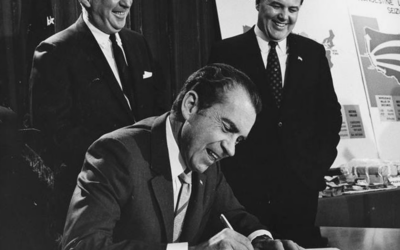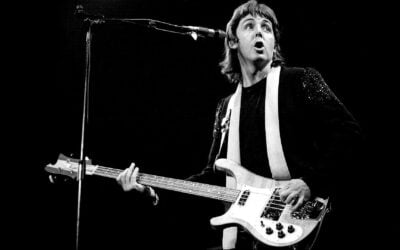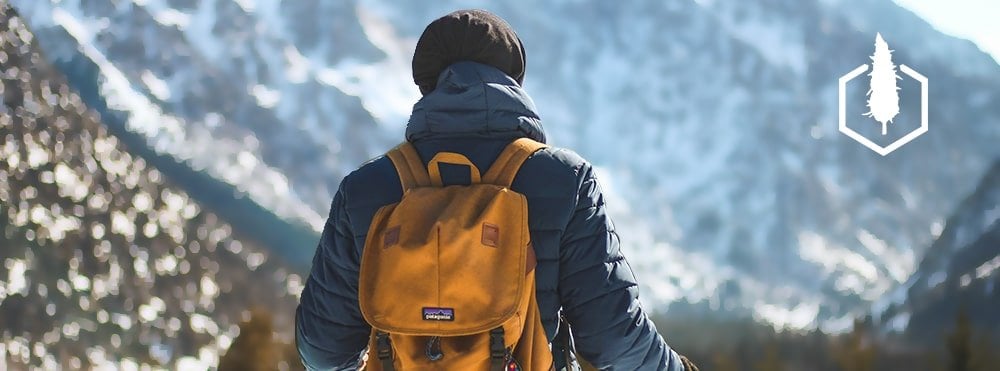The Rise of American Cannabis Culture
The Rise of American Cannabis Culture
The modern cannabis culture is still young. After all, it was completely illegal throughout the US until 1996, when California voted to permit medicinal cannabis. And here in Colorado, we’ve only been able to operate since 2014.
These breakthroughs were a very long time coming (and would have been regarded as truly impossible during the Reefer Madness era). And if the decade of the 1960s hadn’t unfolded the way it did, they may not have happened at all.
Here’s how the 1960s, that era of seismic change, set the stage for today’s cannabis culture.
The 1960s flipped the Western world on its head
After the peaceful respite of the 1950s, the 60s plunged America into its most tense, frantic time since World War II. The US and Russia stopped just short of nuclear war during the Cuban Missile Crisis in 1962 – and while the two parties defused that standoff, the latent anxiety of living through the Cold War remained.
Next, President Kennedy’s assassination shocked the world, and soon after the US committed troops to what would turn out to be nearly a decade of brutal fighting in Vietnam. Meanwhile, racial tensions came to the forefront during the civil rights movement, and spiked with the assassination of Martin Luther King, Jr.
This turbulence catalyzed the American counterculture movement. As more Americans questioned their government, anti-legalism became widespread; protestors marched in support of the Civil Rights Act and blatantly ignored draft laws that might send them to fight in Vietnam.
Rebellion went mainstream, and smoking cannabis quickly became a way to rebel.
In January 1965, beat poet Allen Ginsburg held a few “Lemar” (Legalization of Marijuana) protests in New York City.
These protests only drew a handful of demonstrators, and affected no real change in the short-term (even today, looking back at Ginsberg’s hand-drawn “Pot is Fun” sign makes it hard to see his demonstration as much more than a troll job), but Lemar became a precursor for impactful movements like NORML (the National Association for the Reform of Marijuana Laws) – the cannabis advocacy group founded in 1970 that is still active today.
Young America “turned on”
Cannabis quickly found its place in the America of the 60s. It gave some people a respite from the anxiety that ruled the day, and it gave others a new way to party.
By the middle of that decade – even before the counterculture reached critical mass at Haight and Ashbury, before the “Summer of Love”, and before Woodstock – young Americans were already “turning on” (the day’s slang expression for getting high) at cities and colleges throughout the US.
In 1966, journalist Richard Goldstein interviewed students and faculty at more than 50 American colleges for a Saturday Evening Post article on the rise of drug use in the US and got a glimpse into new world of widespread experimentation – where polite, well-dressed “pushers” sold cannabis on campus quads to dropouts, honor students, and everyone in between.
Read a profile of the 1960s cannabis culture in New York’s East Village here.
Some school administrators Goldstein interviewed (perhaps in various states of denial) claimed that just 1% of their university students used cannabis. But students from various schools estimated that anywhere from one-fifth to one-half of their respective student bodies experimented – a statistic that would have been unthinkable just a decade earlier, in the clean-cut world of the 1950s.
Cannabis grows wild in many parts of the US, meaning that there was always enough supply to meet the growing demand. Students brought cannabis to school (which they called “boo” “stuff” “maryjane” or “grass”), hid it in their foot lockers, and rolled it into cigarettes to smoke in dorm parties or on the beach.
“It’s so absolutely easy to find,” one co-ed reported. “It’s easy to stay high weekend after weekend without ever spending a cent.”
Students told Goldstein that cannabis “intensifies everything,” and that “it relaxes me, like two drinks without the aftertaste.”
Others said that cannabis “broadens the perspective I have on myself. I’m not so fooled by what people around me think,” and that, “pot takes the pressure off in a very real way.”
The best part? Students liked that cannabis didn’t give them a hangover.
Many of them smoked to the sounds of Bob Dylan (“Rainy Day Women #12 and 25”) and The Beatles (“Got to Get You Into My Life”) crooning about cannabis on the radio.
The era of barely-concealed experimentation echoed the secret alcohol parties of the Prohibition era. Procuring and using cannabis became a game, and this only added to its appeal.
Anti-cannabis myths fell apart
During their experimentation young Americans realized that, contrary to the dire warnings, cannabis would not ruin their lives.
They realized what the day’s medical professionals already knew: That while cannabis could be habit-forming, it was not addictive – and it was less physically damaging than alcohol.
Another substance, LSD, was also gaining in popularity at the time – but many students heard anecdotes of bad acid trips, and that is why more of them decided to stick with cannabis.
They also discovered that the “gateway drug” argument didn’t hold water. “They deny that student users graduate to heroin,” Goldstein wrote of the students he interviewed. Young people knew that substances such as heroin were dangerous, and this meant that they were “uncool.”
Meanwhile, the students said they were hard-pressed to provide any examples of “bad cannabis trips” – falling asleep at a party was generally the worst “consequence” any of them had experienced.
“With pot, all they can dig up to make us stop is the narcotics squad,” said one college student.
Students knew that they faced federal penalties of at least two years in prison if they were caught, though these penalties were rarely enforced. Few cannabis users were ever jailed, or even expelled.
“If they decided to bust everyone who’s ever taken a puff,” another student said, “they’d have to hold classes in the city jail.”
Change can be slow – but it’s still happening regardless
Goldstein wrote that medical professionals in the 60s predicted “that marijuana will someday rival liquor as the prime social intoxicant.”
Even sixty years later, this prediction has not yet come true (Americans still love their beer), but the cannabis movement has made consistent and significant progress.
Much of this progress is due to the experimentation of the 1960s. That was the decade when cannabis earned an unspoken acceptance in American culture, and some people who experimented with it became advocates.
One key thing that the cannabis movement shows our society is that, with time and sincere dedication, profound change is possible.
Northern Standard’s robust full-spectrum cannabis oils have been the industry standard since we launched in 2016.
Go here to see where our extracts are available, and view our full line of vape accessories here.
Related Articles
The History of Cannabis Criminalization
It’s an unprecedented time in cannabis culture. Many of us can buy some flower or an edible at a corner dispensary right now - which would have been unthinkable in our parent’s time. As legalization progresses in the US and across the globe today, it’s...
The Story of Your Favorite Rock Stars’ Cannabis Arrests
Many of our greatest creatives and musicians have used cannabis as a creative aid - and they did so at a time when consumption was still illegal in nearly every part of the globe. With the extra scrutiny that comes with life under the spotlight, this meant that...
The History of the Vape Pen
On the Shoulders of Giants Just as we wouldn’t have the Ferrari without first making the Model T, we wouldn’t be carrying vape pens today if it weren’t for the Ancient Egyptians. Here’s the story of where our vape gear came from. Traders from Asia brought cannabis to...
